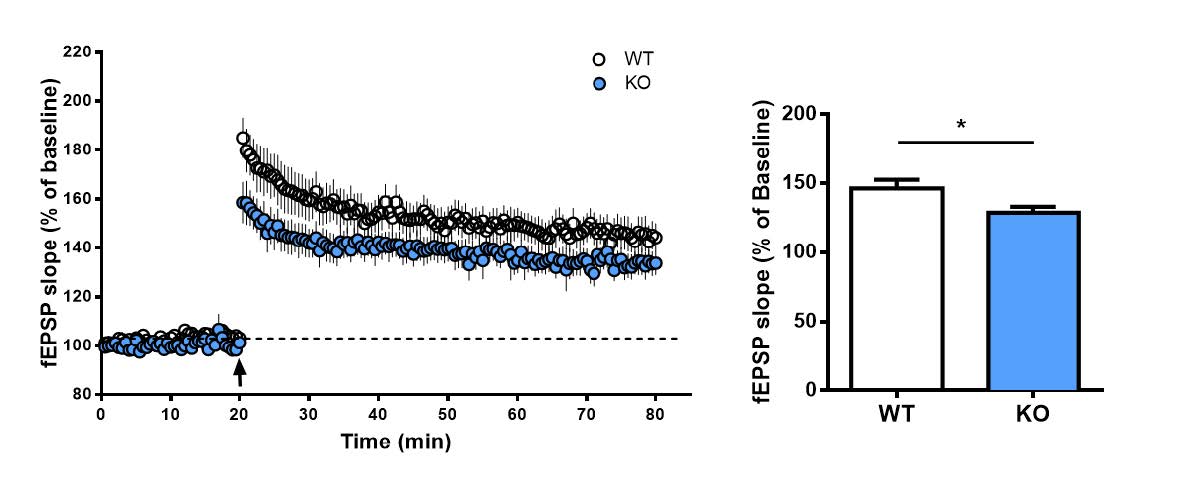Articles
Article Tools
Stats or Metrics
Article
Short Communication
Exp Neurobiol 2018; 27(5): 344-349
Published online October 31, 2018
https://doi.org/10.5607/en.2018.27.5.344
© The Korean Society for Brain and Neural Sciences
Circadian Regulation by REV-ERBα Mediates Hippocampal E-LTP in a Time-dependent Manner
Ja Eun Choi1, Somi Kim1, Jisu Lee1, Kyungjin Kim2, and Bong-Kiun Kaang1*
1School of Biological Sciences, Seoul National University, Seoul 08826, Korea.
2Department of Brain and Cognitive Sciences, DGIST, Daegu 42988, Korea.
Correspondence to: *To whom correspondence should be addressed.
TEL: 82-2-880-9024, FAX: 82-2-884-9577
e-mail: kaang@snu.ac.kr
Abstract
Circadian rhythms are driven by circadian oscillators, and these rhythms result in the biological phenomenon of 24-h oscillations. Previous studies suggest that learning and memory are affected by circadian rhythms. One of the genes responsible for generating the circadian rhythm is Rev-erbα. The REV-ERBα protein is a nuclear receptor that acts as a transcriptional repressor, and is a core component of the circadian clock. However, the role of REV-ERBα in neurophysiological processes in the hippocampus has not been characterized yet. In this study, we examined the time-dependent role of REV-ERBα in hippocampal synaptic plasticity using Rev-erbα KO mice. The KO mice lacking REV-ERBα displayed abnormal NMDAR-dependent synaptic potentiation (E-LTP) at CT12~CT14 (subjective night) when compared to their wild-type littermates. However, Rev-erbα KO mice exhibited normal E-LTP at CT0~CT2 (subjective day). We also found that the Rev-erbα KO mice had intact late LTP (L-LTP) at both subjective day and night. Taken together, these results provide evidence that REV-ERBα is critical for hippocampal E-LTP during the dark period.
Graphical Abstract

Keywords: Circadian clock system, Circadian rhythm, Neuronal plasticity, Long-term potentiation


